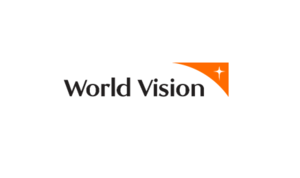Yemen
Response Innovation Lab (Pop-Up)
Overview
The Yemen war has created the world’s largest humanitarian emergency. About 24 million people in Yemen need aid, 80% of the country’s population. More than half of the people in need are children. The combined death toll from conflict and disease is estimated at 235,000 people. In addition to horrific violence, people are suffering from hunger and deprivation. Among the 20 million people facing acute food insecurity, 2 million children under age 5 are severely malnourished. Millions lack access to basic healthcare, clean water, and sanitation, and about 4 million people have been displaced from their homes. War and factionalism have reversed Yemen’s human development by more than 20 years. According to the U.N. Development Program, already 47% of the Yemeni population lived in poverty in 2014. By the end of 2019, the poverty rate in Yemen exceeded 74%.
Serving the most vulnerable.
The Challenge
The Response Innovation Lab is working with World Vision, Save the Children, and Oxfam to address an immediate challenge of the lack of preventative messaging across the country, addressing such health crises as COVID-19. The humanitarian situation continues to worsen in Yemen due to renewed conflict in the South and North (specifically Marib and Albaydah), COVID-19, Cholera, Dengue, and Chikungunya. Our joint initiative seeks to respond with greater impact through remote mechanisms that empower our deployment teams and local organizations, institutions, and government entities with greater access to tools and coordination.
The Solution
The Adaptive Response Messaging (ARM) model was piloted in Somalia with World Vision (via the SomReP consortium) and replicated in Yemen. The ARM is a process innovation model and establishes a new way of coordinated response-time messaging that demonstrates a singular focused messaged broadcast across multiple mediums through multiple partners; thus, the messaging is unbranded, removing a proprietory need.
Typically, during responses, many different actors – Government, NGOs, INGOs, Civil Society, and multi-lateral institutions – are sending out uncoordinated messaging around prominent issues that affect their lives. Also, at times, myths of what can and cannot be done emerge sometimes born out of fear, misinformation, or cultural and religious ideas. Together, these two issues drastically affect populations, actions in need, and spread confusing and contradictory messages. Vulnerable people, such as children, the disabled, and the elderly, are significantly affected during emergencies. By focusing on targeted messaging aimed at them and their caregivers, better care and resources can become available. During COVID-19, this issue has been ever prevalent globally as health professionals and systems react to an unknown SARS virus.
Working with Save the Children, World Vision, and Oxfam, the Response Innovation Lab has supported the production of high-quality public health messaging contextualized and translated them into the local Yemeni language as materials to be shared across Yemen through partnership, media networks, and beyond. Many of these messages are targeted to specific populations that pose the greatest risk of infection, such as health care workers, those in remote communities without adequate access to health care facilities, and children, and during events such as burials or conducting livelihood activities.
The Activities
The ARM model establishes a singular focused messaged broadcast across multiple mediums through multiple partners; thus, the messaging is unbranded to remove any barriers. Additionally, messages are targeted to key messages for particular messaging groups –called narrowcasting. As the messages are broadcast across multiple mediums, the audiences hear a singular voice on messaging both for prevention, actions, and response through many partners.
The RIL will conclude Phase I in Yemen, which focused on establishing a preliminary understanding of needs and contextualizing already developed videos to the Yemen context. As the process moves from the initial response into Phase II, the focus begins to localize all production and ultimately transfer the ARM process to a local actor for a sustainable and long-term goal of ARM being present in the context.
With solutions
The Yemen COVID-19 Messaging Repository
ACCOMPANING MATERIALS
For the most vulenrable
Our Model
The Response Innovation Lab provides tools and guidance for actors to develop solutions jointly, whether using existing approaches or incubating innovations. Our Labs work in their local responses and can be contracted externally, alongside the Central-Support unit to support innovation, innovators, and ecosystem development.
Below are our three core functions:
Convene
Convening all stakeholders involved in the response is the first action the Response Innovation Lab takes. In doing so, the intent is to understand and build the Ecosystem surrounding the response. Through the convening, an Ecosystem Map is produced to highlight all stakeholders, where and how they work. The Ecosystem then works together to identify current challenges that affect the population the most and how and if they overlap with other challenges - we call this the Challenge Map. When the Ecosystem and challenges are mapped, the Response Innovation Lab moves into Matchmaking's second function.
MatchMaker
The Matchmaking function supports finding and developing solutions to match the identified challenges. Utilizing a team of experts from the humanitarian sector, we support innovations from other contexts that are piloting, scaling, or in production, and those from the local communities that can be developed. The final tier of solutions are presented to specific stakeholders in the identified challenge, and they select the best solution to move forward. With that final selection, the Response Innovation Lab moves on to its third function of Support.
Support
The Support function supports the innovator by matching the innovation to a challenge, ensuring humanitarian ethics are followed, capturing programmatic information through monitoring and evaluation, and coaching and hands-on support business development, funding, and market entry. For the challenge holders, support is given by identifying funding opportunities to pilot the solution (although we recommend this happens before the solution identification) and monitor and report the impact. In some cases - as in Yemen - we coordinate and support the implementation of innovative approaches.




















